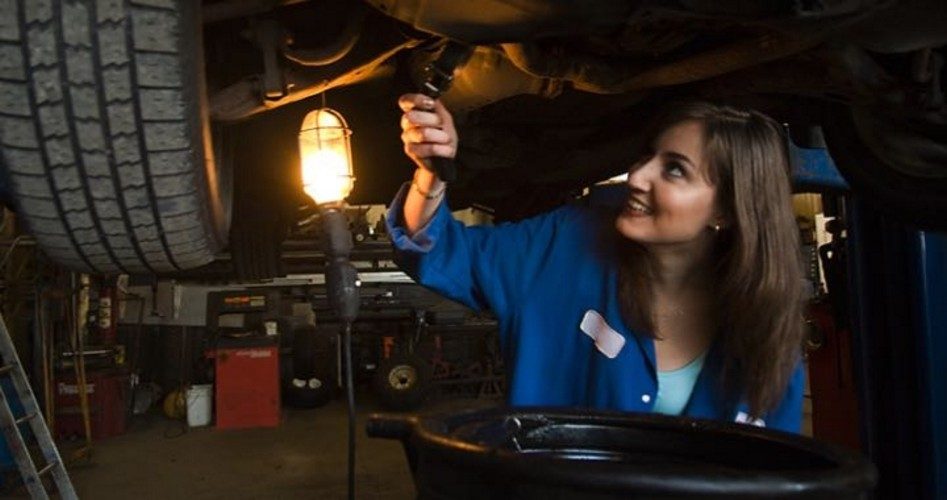
As part of his plan to “make the Federal Government more responsive and accountable to the American people,” President Donald Trump has announced his intention to merge the federal Departments of Labor and Education.
“Billions and billions of dollars are being wasted on activities that are not delivering results for hardworking American taxpayers,” the president said, in a statement released on June 21.
Last year, President Trump signed an executive order directing the Office of Management and Budget (OMB) to work on a comprehensive plan to reorganize the executive branch.
More than a year later, this expansive reshuffling of bureaucratic responsibilities includes about a dozen different projected moves that will reconstruct the executive branch, motivated in major part by President Trump’s belief that “today’s Executive Branch is not equipped to meet Americans’ 21st century needs.”
Perhaps the plank of this platform attracting the most attention is that which calls for the merger of the federal Departments of Education and Labor.
Combining these two agencies will, the president promises, “better meet the needs of American workers and students.”
A story in the Washington Post analyzing the entire scope of the president’s proposal explains that the joining of Education and Labor is designed to “allow the Trump administration to focus its efforts to train students in vocational skills in one place.”
The article chronicles various previous attempts to merge the federal education bureaucracy with the federal workforce bureaucracy, including a bill offered in 1995 in the House of Representatives that would have “put K-12 schools and job training together.” The bill failed.
Fortunately, then, given the legislative history, President Trump has decided not to wait for Congress to act. He will exercise his authority as the head of the executive branch to mold it into something more to his liking. Whether Congress wants to join in the renovation is up to them, apparently.
Remarkably, the Washington Post’s piece admits what we all know all too well: “The government structure has remained largely intact under both Democrats and Republicans.”
Of course, the Post is quick to point out, “The Education Department is the smallest Cabinet agency in number of employees, with just under 4,000, and a $68 billion budget. It oversees federal student loans, distributes K-12 education funding, and enforces federal civil rights laws at public schools and colleges.”
And, the Post adds, Trump and Education Secretary Betsy DeVos have “expressed an interest in eliminating the Education Department.”
In light of his latest proposal, it would seem the president is less interested in eliminating the Department of Education than in converting it into some form of federal factory, producing effective workers.
What most media accounts of President Trump’s plan fail to report is that a document was produced last year after the president first floated his intent to cut and paste the flow chart of federal agencies that provides much greater detail about the project. The document is called “Delivering Government Solutions in the 21st Century: Reform Plan and Reorganization,” and the information in the section covering the merger of the Departments of Labor and Education is, well, educational.
Here’s the goal of the melding of Labor and Education, as laid out in the “Summary”: “The new agency would be charged with meeting the needs of American students and workers, from education and skill development to workplace protection to retirement security. Merging ED and DOL would allow the Federal Government to address the educational and skill needs of American students and workers in a coordinated way, eliminating duplication of effort between the two agencies and maximizing the effectiveness of skill-building efforts.”
There is, not surprisingly, no mention of where the federal government gets the authority to take any role in the education of America’s students. There’s a simple reason for that omission: The universe of federal power is contained in the Constitution and there is not a single syllable, no shadowy penumbra, where the states, upon creating this general government, granted it power over education.
Mind you, had such a suggestion been made at the Constitutional Convention of 1787 it is unlikely that a single one of the 55 (give or take) delegates would have stayed even one more night in Philadelphia!
Ultimately, the president would like to “better integrate education and workforce programs” so as to “increase efficiencies and better serve American workers” all of which would be facilitated by the new department (called the Department of Education and the Workforce) and would culminate in the construction of an “education-to-career pipeline.”
Anyone genuinely interested in the nuts and bolts that will be used to build this federal Education-Workforce Frankenstein is encouraged to click here and read pages 3 to 26 of the manual, which include a spiderweb of departments and programs that will be brought under the Department of Education and the Workforce (DEW) umbrella.
And we all know who’ll be buying that fancy new umbrella: the American taxpayer!
Finally, I’ll give the last word to The Law, Frederic Bastiat’s exposé of legalized plunder. This particular quote focuses on the threats to freedom inherent in government-managed and funded education:
You say: “There are persons who lack education,” and you turn to the law. But the law is not, in itself, a torch of learning which shines its light abroad. The law extends over a society where some persons have knowledge and others do not; where some citizens need to learn, and others can teach. In this matter of education, the law has only two alternatives: It can permit this transaction of teaching-and-learning to operate freely and without the use of force, or it can force human wills in this matter by taking from some of them enough to pay the teachers who are appointed by government to instruct others, without charge. But in this second case, the law commits legal plunder by violating liberty and property.
And there you have it: Good, bad, or indifferent, education is controlled by the federal government only by “violating liberty and property.”
Photo: Clipart.com

